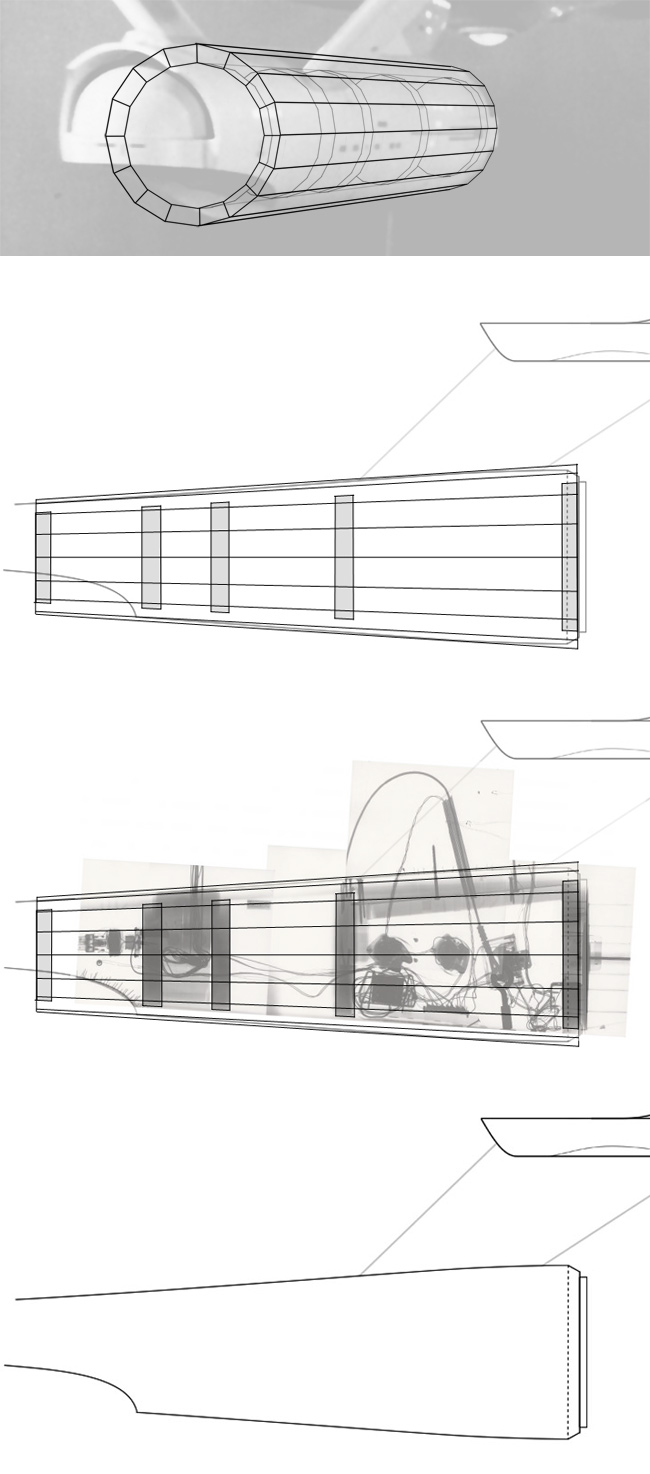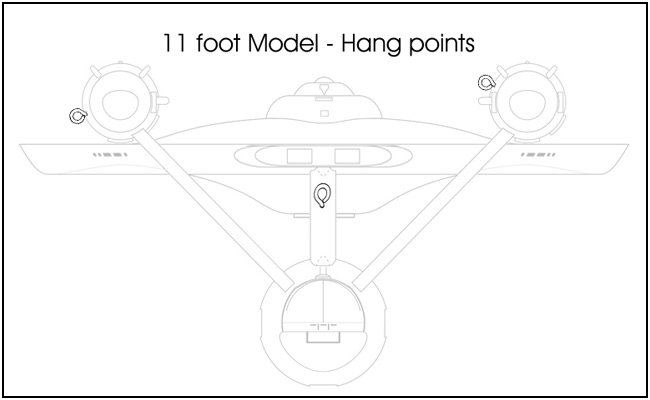As a friend pointed out, I plan everything. Something which this hobby isn't known for. I consider this a design project which means I have completed the design before I get to the machining stage. The armature to me is the most important part of the design. You can do almost anything with cosmetics, but a bad structure makes the whole thing a failure. If the model starts to sag in a few years, then it's a waste of time.
Do you plan an interior support structure for the eventual (I assume) epoxy glass model?
I question if it's necessary for my smaller 66 inch version if I build the secondary hull and pylons from thick layup Matt and a light layup for the saucer and nacelles with glass cloth.
I suppose in terms of engineering and structural strength size does matter. Meaning a small 1/350 model needs no such support but as the size increases and the mass - weight it does.
Certainly at the original 11.5 foot it will?
Steve
The model is going to be a fiberglass shell with an aluminum armature. On your 66" your going to need an armature, the 66" I have has a 1/4" acrylic armature in the secondary hull and saucer(A 66" model is a good sized model, even using acrylic may not be enough). The pylons are resin with an aluminum tube cast into place. But they rely on the fiberglass of the secondary hull for support. That's a real weak spot, because the glassing work on the model is suspect. I have parts changing shape on their own, so even after I complete that model I will be looking for problems.
The structural problems with the TOS E design are complex but not that complex. There are two critical areas on the model.
The white arrows on each end of the model signify gravity. See how far they are from the secondary hull. These cause stress on all of the points I have circled. The primary hull isn't that hard because it has a lot of room for structure. But the engines pose bigger issues.
The spindly pylons(I think they are a joke) are a problem because they would twist about their base. If you used a weak material without any additional support. Or put to much weight into the nacelles. You'll eventually have a really warped ship.
You'll have to do it Steve, or you could do what the other guy did that made a 66" E, hang it from the ceiling on strings. He's not going to be very happy with his ships down the road(if he isn't already).
My pylons are going to be a fiberglass shell, with a 1"x3" aluminum tube for support. Those are going to bolt into the 1/4" aluminum armature in the secondary hull. This is where things get interesting.
This shows what I'm doing in section. The pylon support slides into slots milled into aluminum plate. If you'll notice the rectangular slot in the secondary hull plate. It(there are 4) will slide into corresponding slots in the armature of the 2nd hull. That's so I don't have to weld anything, they will just set in place with gravity's help.
All this why there is box shapes on each side of my pylon patterns.
So the parts will be the correct length, and correctly positioned within the pylons. This structure prohibits a shuttle bay in the model. Since I don't know how far back it goes into the hull, I'll bet it would interfere with the model's structure. As well being able to break down the model should it need to be moved.
I would follow similar rules even with the 350 version of the ship. But that doesn't mean using metals, but since metals are relatively cheap for such a small model it would be a lot easier to epoxy into place.
ATM,
I very much like the idea of the cradle you have for the secondary hull.
You should give serious consideration to making it the stand for whatever kit you come up with as a result of your efforts. perhaps made out of clear lucite or other such material, but I think it would be much more preferable to the "ship on a stick" pole type stand
I'm doing just that, it will be a ship on a stick. But 1" the stick is a 1" steel tube with a 1/2" center(for electrical). Keep in mind the amount of force required to make the steel bend is so extreme, you could pick up a full size pick-up truck, and the bar will only deflect slightly. That will be going into an aluminum armature.
A cradle is not practical for display purposes and it would pose additional problems(the cradles I made are for matching and finishing purposes), plus it wouldn't change anything in the structure of the model. And it would have to still have to be anchored to the model. The shell of the model will be supporting very little. It would really detract from the look of the model, as well as having a very awkward base. I have that designed as well, it will be a piece of furniture(on casters). So I can display more things below the model. And keep the model high enough to be able to walk under the primary hull.
Here is a rough sketch of the armature in the 2nd hull.
This is very rough, I'm still working on the details. There are a lot of them. Such as the 1" slot in the bottom, that will be a tube for the model to set on(with set screws), the wiring will run out of the tube into the hull. It would be impractical to have a connection like the MR E. Since this isn't a model you can fly around the room.
It does show what I'm thinking, and there is another point of trouble. That is the connection to the primary hull. Other models(the MR E & jk 66") you cannot remove the primary hull from the second(not without a lot of work). On this model if I couldn't remove the the primary hull, it would be very impracticable to move(or ship for that matter). I have the solution but that will have be to another post.
Questions? Comments?


















